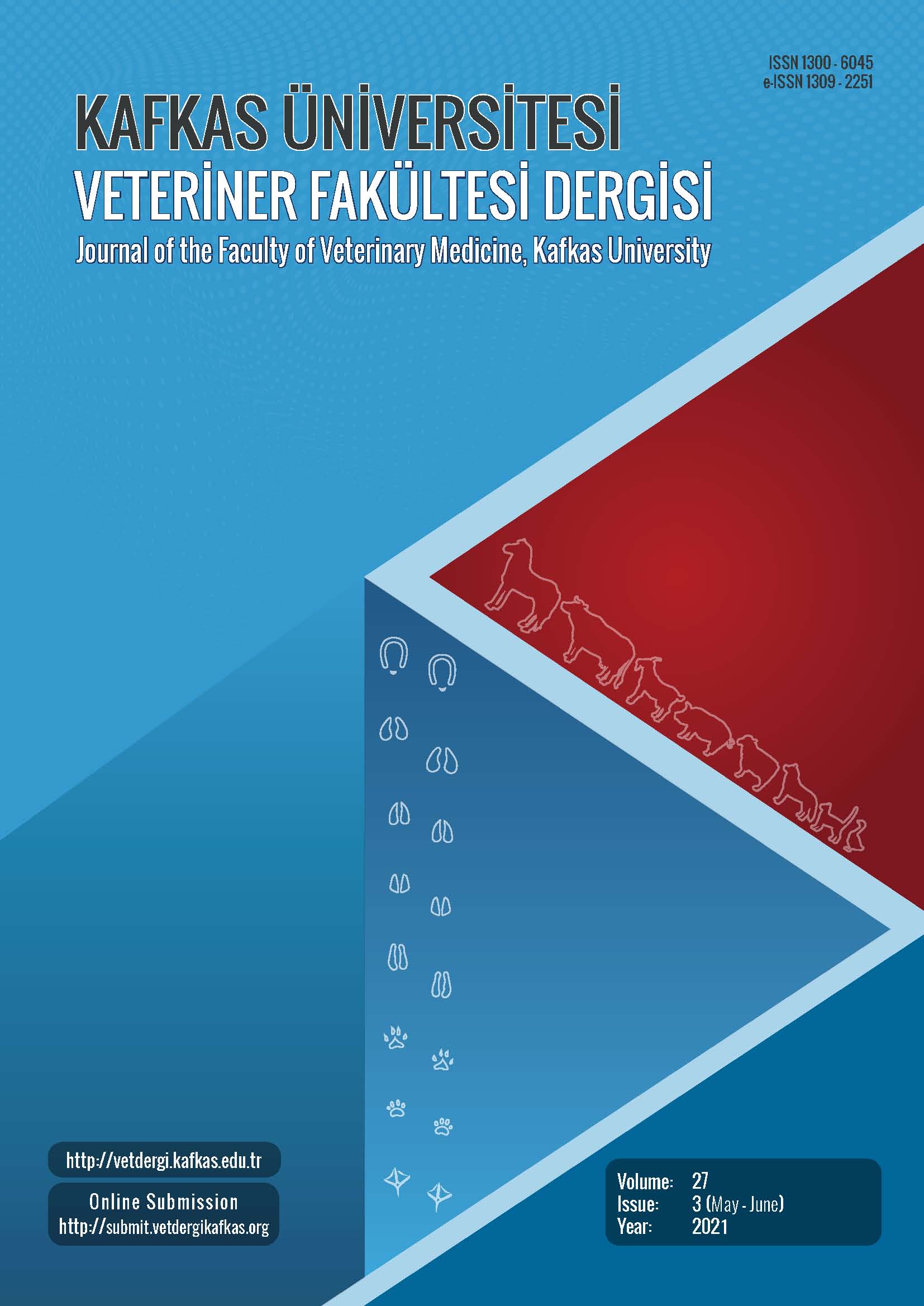
This journal is licensed under a Creative Commons Attribution-NonCommercial 4.0 International License
Kafkas Üniversitesi Veteriner Fakültesi Dergisi
2021 , Vol 27 , Issue 3
Evaluation of Homocysteine Levels in Neonatal Calves with Diarrhea
1Department of Internal Medicine, Faculty of Veterinary Medicine, University of Yuzuncu Yil, TR-65080 Van - TURKEY
DOI :
10.9775/kvfd.2020.24894
The aim of this study was to investigate the relationship between serum homocysteine (HCY), and creatinine, urea, venous blood gas and
electrolytes values in neonatal calves with diarrhea. The study was conducted on a total of 30 calves, 20 with diarrhea and 10 healthy (control),
with diarrhea complaints, of diff erent races, sexes and ages ranging from 2-24 days. According to the venous blood gas results, the pCO2 and
base deficit values of calves with diarrhea were significantly higher (P<0.001) compared to the control group values, while pH, pO2 and HCO3
values were significantly lower (P<0.001). While serum Na+ and Cl- concentrations in diarrheic calves did not show any statistical change
when compared to the control group (P>0.05), serum K+ concentrations were statistically higher (P<0.001). Serum HCY, folate and vitamin
B12 concentration values of diarrheic calves were significantly higher (P<0.001) when compared to the control group. As a result; in neonatal
calves with diarrhea, it has been concluded that homocystein excretion is disrupted by low renal excretion due to decrease in glomerular
filtration rate that caused hyperhomocysteine. In addition, it is thought that this study will shed light on studies that will reveal the eff ect of
hyperhomocysteinemia in the cardiovascular system in diarrheic calves.
Keywords :
Homocysteine, Neonatal calf, Diarrhea










